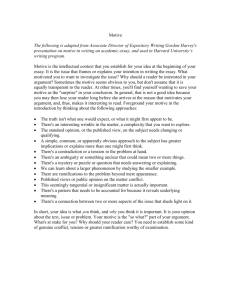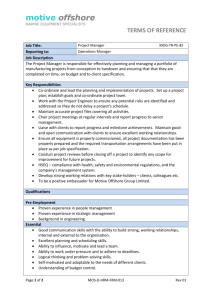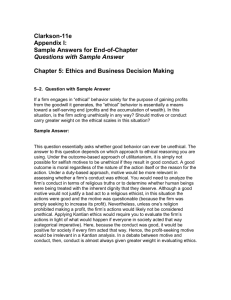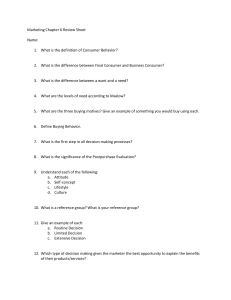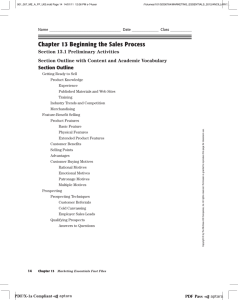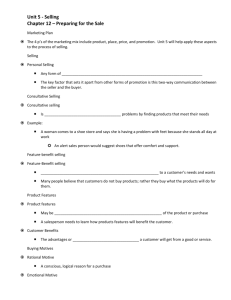Analyzing Melody: Tunes, Motives, and Themes
advertisement
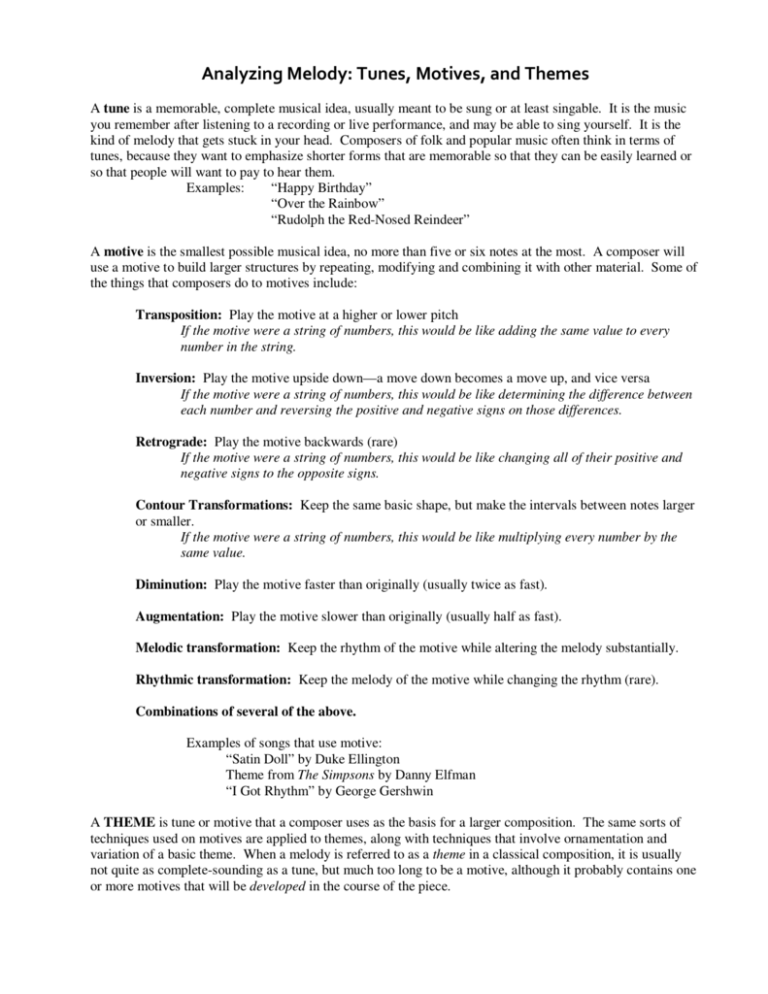
Analyzing Melody: Tunes, Motives, and Themes A tune is a memorable, complete musical idea, usually meant to be sung or at least singable. It is the music you remember after listening to a recording or live performance, and may be able to sing yourself. It is the kind of melody that gets stuck in your head. Composers of folk and popular music often think in terms of tunes, because they want to emphasize shorter forms that are memorable so that they can be easily learned or so that people will want to pay to hear them. Examples: “Happy Birthday” “Over the Rainbow” “Rudolph the Red-Nosed Reindeer” A motive is the smallest possible musical idea, no more than five or six notes at the most. A composer will use a motive to build larger structures by repeating, modifying and combining it with other material. Some of the things that composers do to motives include: Transposition: Play the motive at a higher or lower pitch If the motive were a string of numbers, this would be like adding the same value to every number in the string. Inversion: Play the motive upside down—a move down becomes a move up, and vice versa If the motive were a string of numbers, this would be like determining the difference between each number and reversing the positive and negative signs on those differences. Retrograde: Play the motive backwards (rare) If the motive were a string of numbers, this would be like changing all of their positive and negative signs to the opposite signs. Contour Transformations: Keep the same basic shape, but make the intervals between notes larger or smaller. If the motive were a string of numbers, this would be like multiplying every number by the same value. Diminution: Play the motive faster than originally (usually twice as fast). Augmentation: Play the motive slower than originally (usually half as fast). Melodic transformation: Keep the rhythm of the motive while altering the melody substantially. Rhythmic transformation: Keep the melody of the motive while changing the rhythm (rare). Combinations of several of the above. Examples of songs that use motive: “Satin Doll” by Duke Ellington Theme from The Simpsons by Danny Elfman “I Got Rhythm” by George Gershwin A THEME is tune or motive that a composer uses as the basis for a larger composition. The same sorts of techniques used on motives are applied to themes, along with techniques that involve ornamentation and variation of a basic theme. When a melody is referred to as a theme in a classical composition, it is usually not quite as complete-sounding as a tune, but much too long to be a motive, although it probably contains one or more motives that will be developed in the course of the piece.
